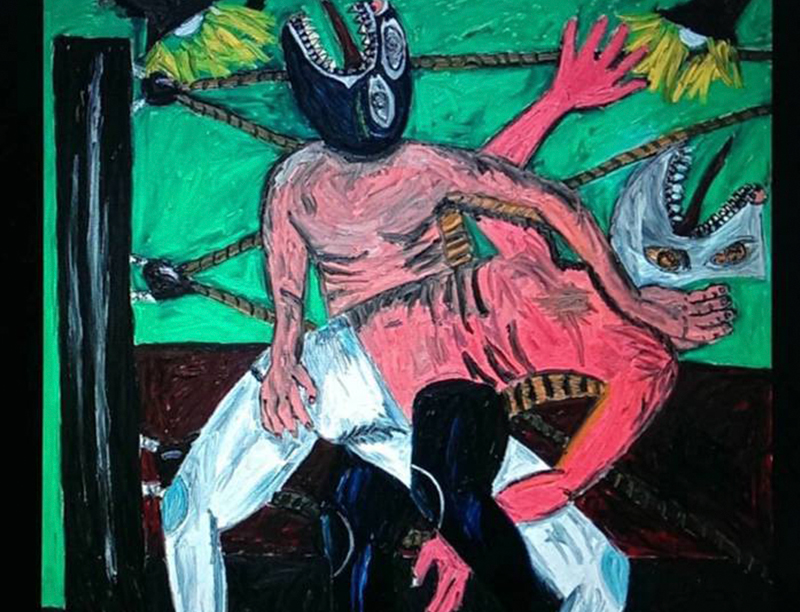SERIE: LOS DISPARATADOS
Erik Castillo
El cuerpo de obra de esta serie contiene una trama crítica que hace frente a la decadencia de los poderes en la dinámica social contemporánea. Ante un mundo que es testigo (y víctima) del retorno de múltiples fascismos, Víctor Hugo Pérez propone una cadena de extravagantes alegorías. Las distintas piezas de la serie recuerdan la fascinación del artista por los Ex votos populares. Sólo que ahora, en lugar de repetir la lógica narrativa de aquellas hermosas pinturas, en las que se observan los hechos milagrosos que las potestades celestiales realizan para los fieles devotos, Víctor Hugo Pérez invierte las retóricas de agradecimiento y pone en evidencia –con actitud crítica y jugando con personajes emblemáticos- las iniquidades que suceden en las altas esferas del poder multinacional.
SERIES: THE RIDICULOUS GANG
The body of work in this series contains a critical storyline that challenges the decadence of power in contemporary social dynamics. Faced with a world that is witness to (and a victim of) the reappearance of multiple forms of fascism, Víctor Hugo Pérez presents a series of extravagant allegories. These pieces bring to mind Pérez’s fascination with popular votive offerings, except that instead of repeating the narrative logic of those beautiful paintings – the ones where miraculous events being carried out by celestial powers for the devout can be observed – Víctor Hugo Pérez reverses the rhetoric of gratitude and exposes – with a critical attitude and with emblematic figures in play – the iniquities that occur in the highest echelons of multinational power.





